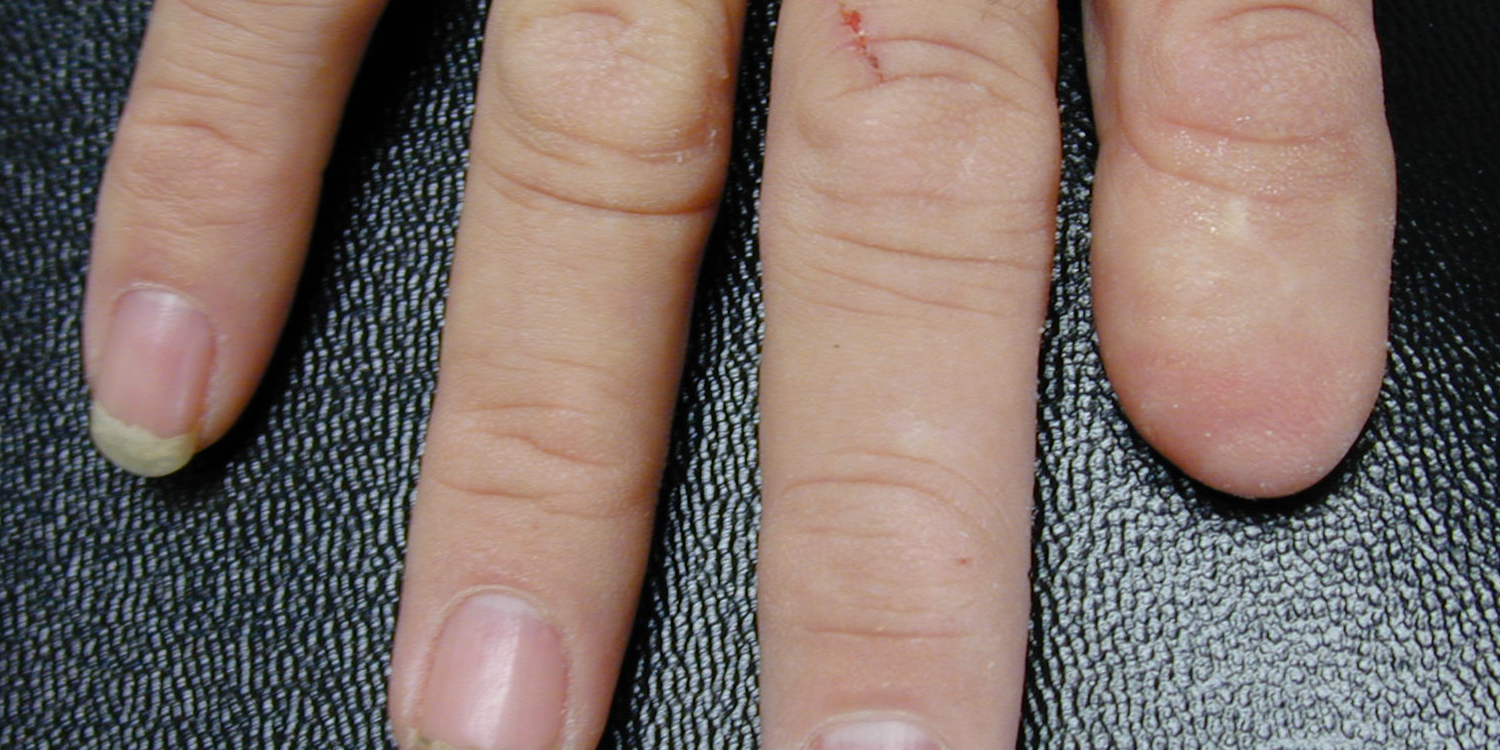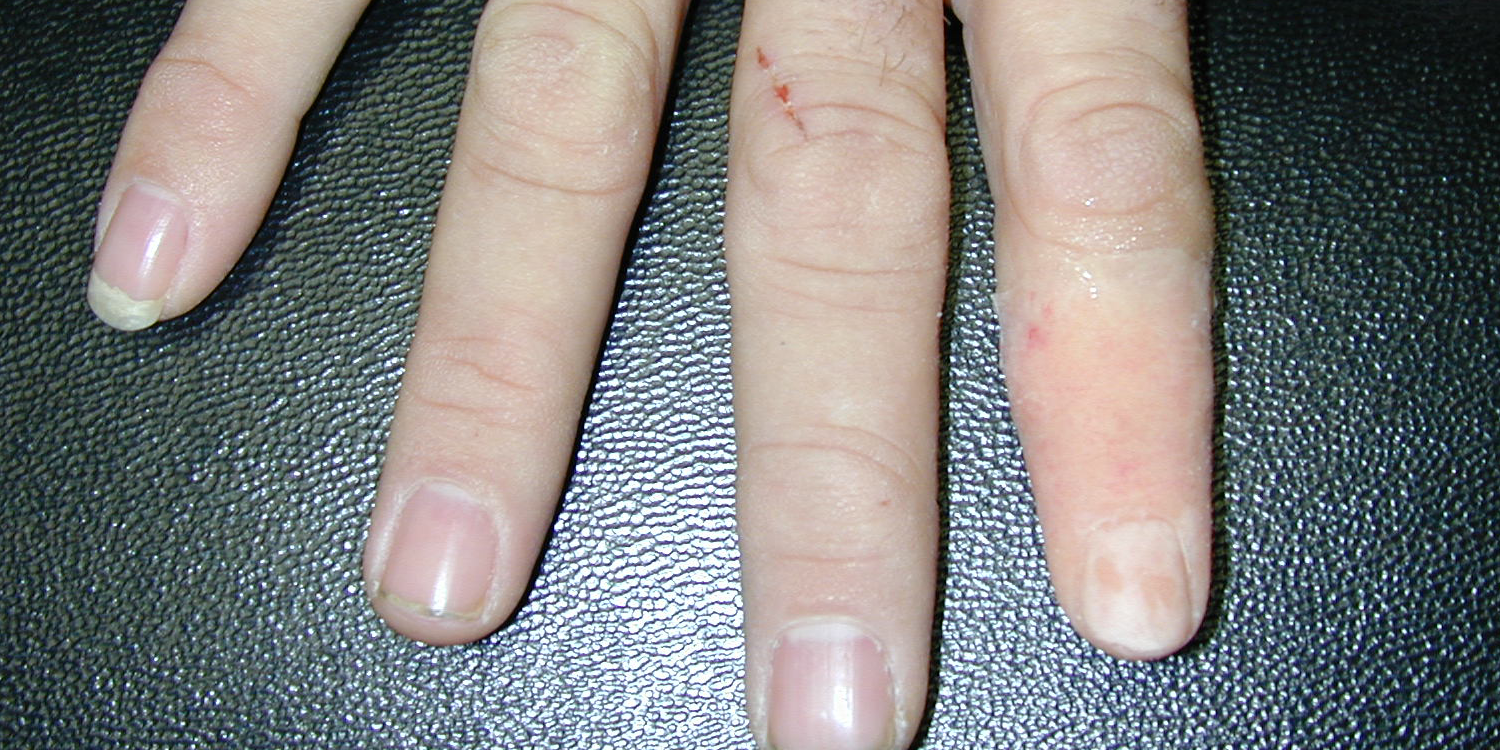Specializing in Custom Made Facial and Ocular Prosthetics
Fingers and Toes
Please visit our Photo Gallery to see more examples of digital prosthesis.
A digital (finger or toe) prosthesis replaces a portion or all of an absent finger or toe. If the patient has movement in the remaining portion of the digit, the prosthesis will restore its function. This type of prosthesis is attached by suction or adhesive and is form fitting. The prosthesis will protect the sensitive tip of the digit from trauma and extreme temperatures. Digital prosthesis also serves as a great psychological benefit in the rehabilitation of the patient, for example a finger prosthesis will allow patients to resume normal activity, such as typing on a keyboard correctly and without discomfort.
Fabricating a Digital Prosthesis
The process of designing and fabricating a digital prosthesis requires multiple office visits, which may be lengthy, as well as numerous hours of laboratory work. The following steps will be necessary:
Step 1: The creation of a custom digital prosthesis begins with an impression (mold) to duplicate the affected area. The impression is made by injecting a molding agent onto the affected area. Once set, the mold is removed.
Step 2: A dental stone or plaster model is made from the impression and is used as the basis for fitting and making the prosthesis.
Step 3: The prosthesis is first sculpted in wax or a combination of wax and acrylic. The wax allows us to have various try-in sessions to make sure that the restoration is comfortable and well-fitting.
Step 4: Once this is achieved, the wax model is cast into a plaster or epoxy mold and then prepared for the placement of pigmented silicone.
Step 5: With the patient present in the office, the future prosthesis is painted to match the fellow area. The process continues until an exact color match is achieved.
Step 6: The prosthesis is delivered to the patient.
Additional steps may be required for some types of prostheses.
Care of Digital Prosthesis
Removal and Cleaning
Removing your prosthesis is easy and cleaning it is as easy as using mild soap and warm water, and mild soap. You can allow it to air dry or use a soft, clean towel.
Color Changes
Avoid smoking, as it will stain and yellow the prosthesis.
Avoid prolonged exposure to sunlight, which can cause color dissolution and weakening of the prosthetic material.
Avoid the use of strong solvents, such as benzene and xylene, which can cause dissolution and weakening of the prosthetic material.
Storing the Prosthesis
Store the prosthesis in a dry, inconspicuous but safe place (for example, a bed side table drawer). Keep it out of the reach of children and animals.
Avoid placing the prosthesis in purses or pockets close to items such as ink pens and makeup that could stain it.




